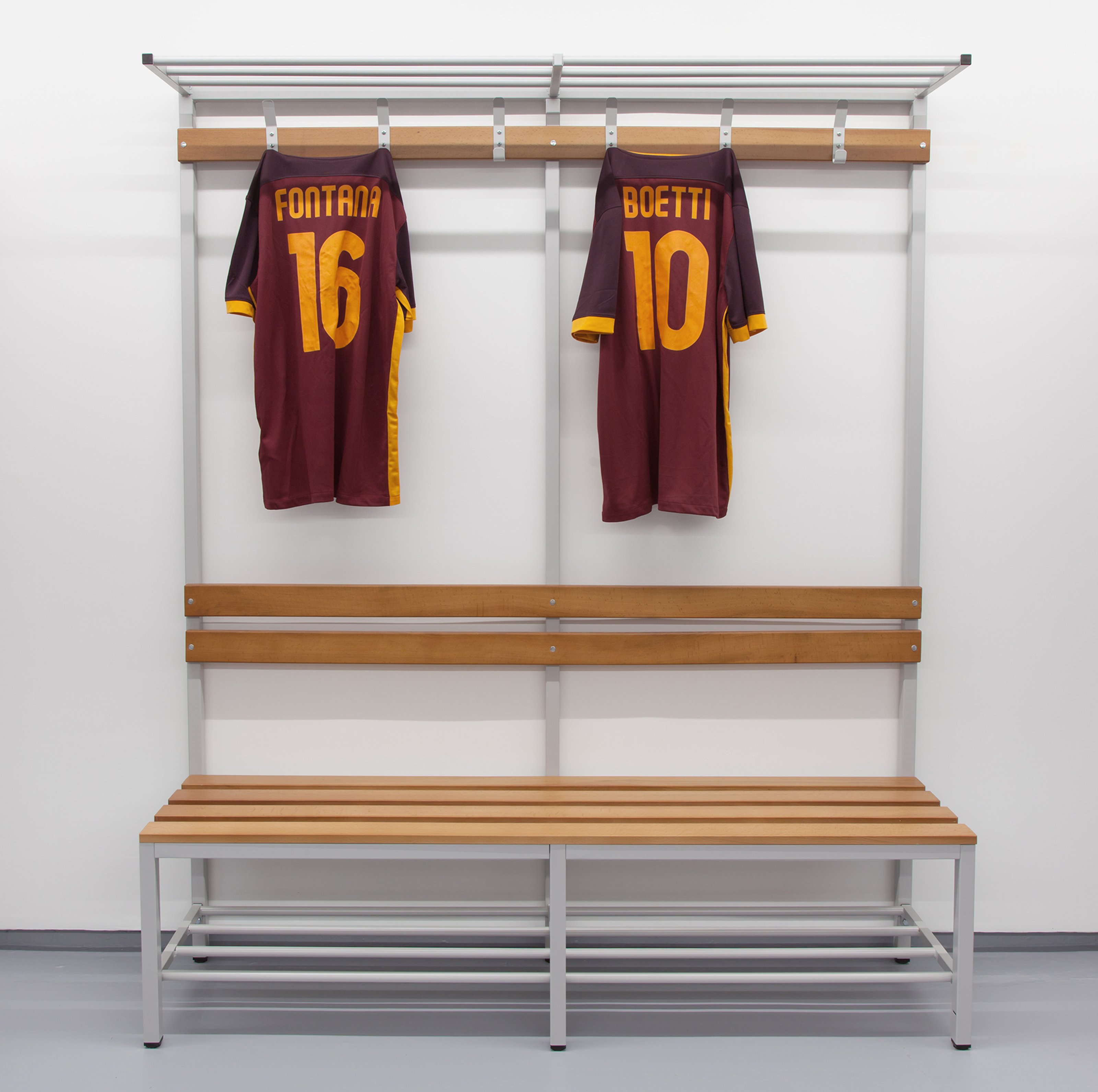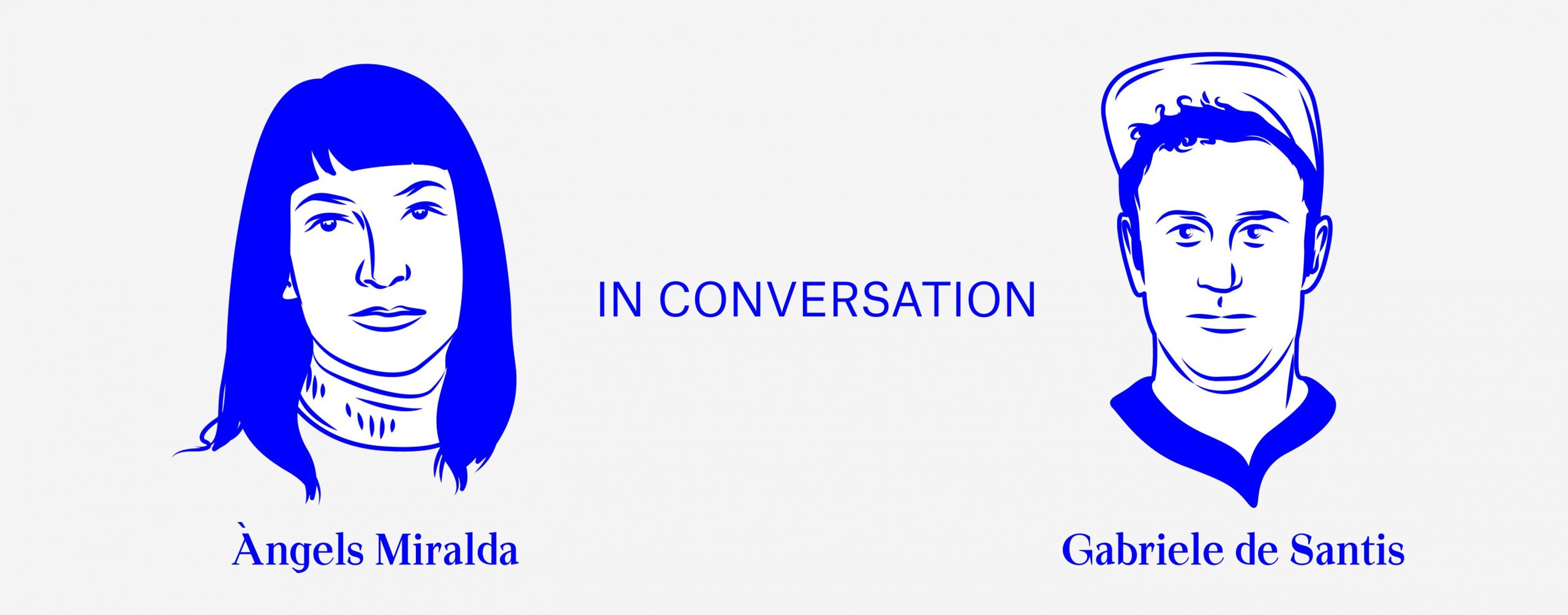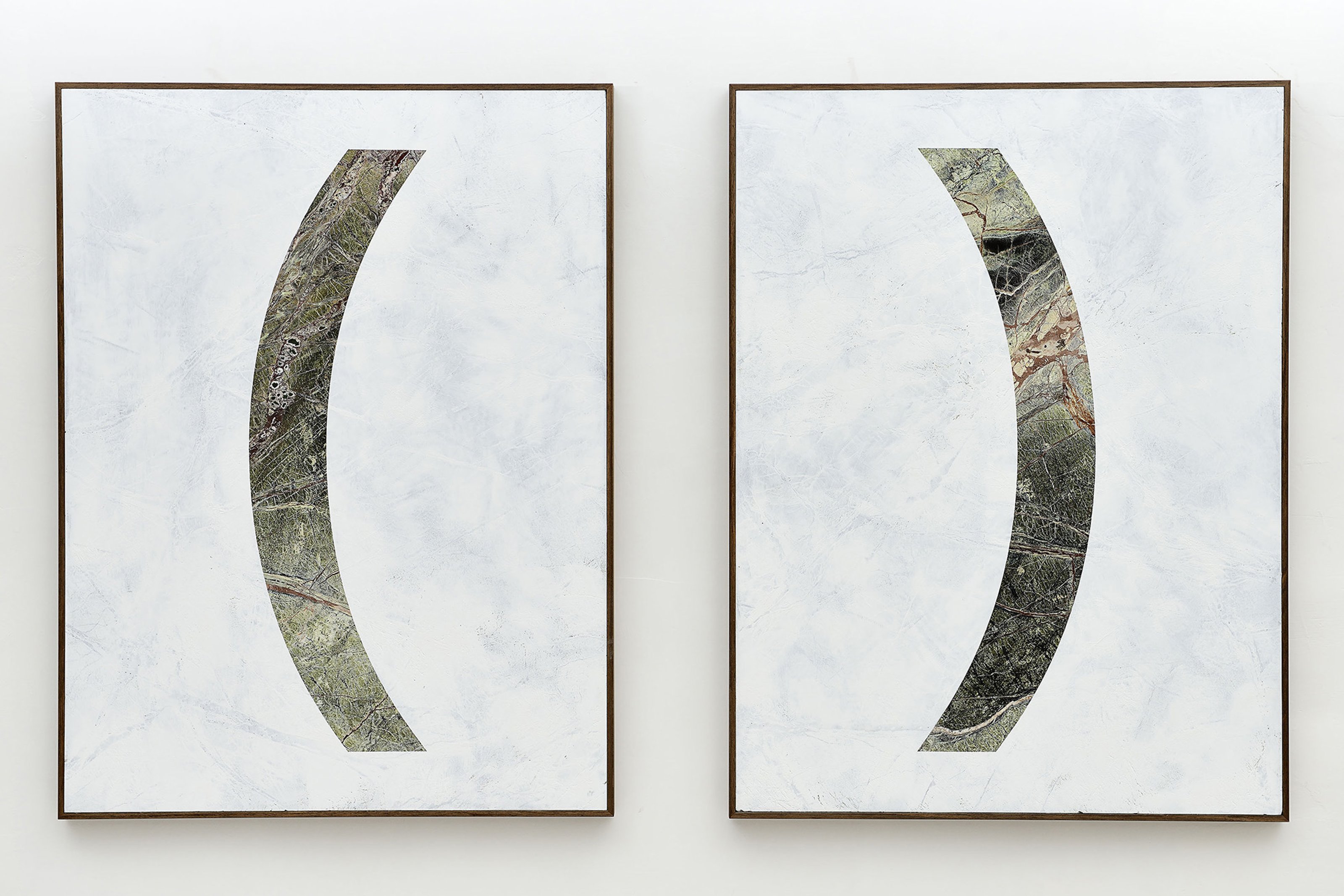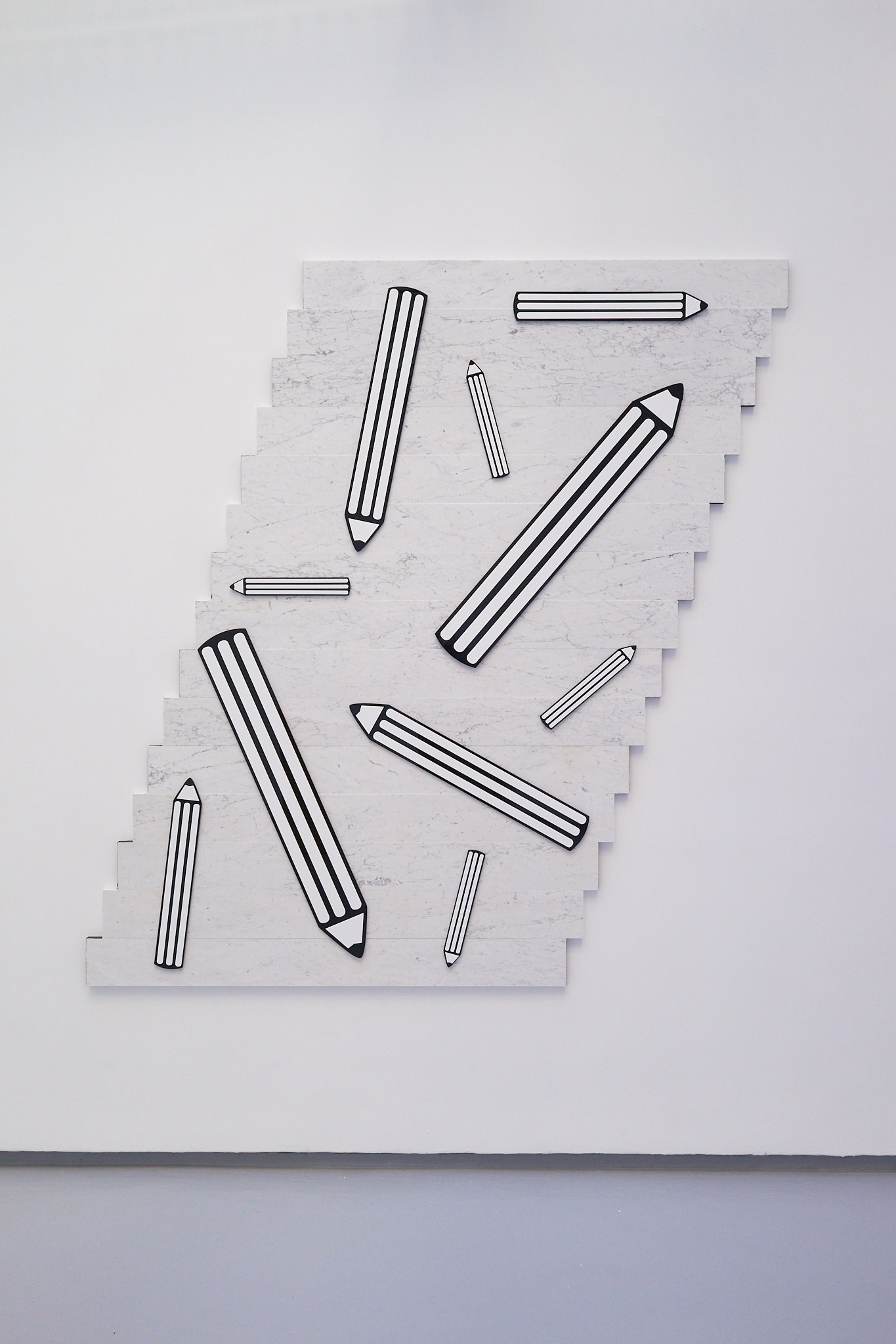

Gabriele de Santis is known for his work full of juxtapositions and contradictions. The practice is continuously on the line between conceptual and kitsch, heavy and light, humorous and reflective. Often working with tropes of contemporary art, he points to basic truths of our time but with a sense of humility difficult to find in artistic projects. Using the figures of sport stars and other celebrities, de Santis aims at defining our times through a contemporary popular subconscious, an order and logic derived through our chaotic and mediated environment.
A comparison that appears frequently in his work is the relative status of artists and celebrities. The professional art scene always ends up being a small world compared to the global recognition of actors, musicians, or sports stars. Yet, artists also achieve certain levels of celebrity and pertain to popular stereotypes and character identifications. In the work Fontana, Boetti (2015) the two artist’s names are printed on the backs of sports jerseys of the same team, signaling their artistic affinity and an unrecognised spirit of competition that exists behind artistic merit. In 2016 de Santis followed up with this parallel in a peculiar football game staged within the public programme of the Roman art fair Granpalazzo in which artists, collectors, and curators, had to play a match of football while holding an artwork that they own. In this sense art became a burden in the context of the sport.
The level of celebrity and fame becomes a reflection of high versus popular taste – an important distinction in contemporary art which remains inaccessible and opaque to audiences outside of the art world. Objects in de Santis’ sculptural practice often contain amusing references to teenage fame and interest such as skateboards or basketballs. Gabriele de Santis’ 2017 solo exhibition at Frutta Gallery in Rome titled Truth Be Told uses the aesthetics of skaters and graffiti to transform the gallery space into an unused garage, tunnelesque graffiti ground. The work Niente superstar ma solo stelle der quartiere (Not a superstar, just famous in the neighbourhood) used Roman slang in the title of a painting blended seamlessly into the in-situ wall mural – a common scene in Rome’s urban center. This painting is contextualised as a hooligan act rather than a piece of contemporary art. These comic turns in objects bring criticism and reflection into our systems of valuation.
Image: Gabriele de Santis – Fontana, Boetti, 2015. Installation view at Galerie Chez Valentin.

Gabriele De Santis – ( ), 2014 (Marble, Acrylic, Framed)
In To spot the number can take up to 60 seconds, de Santis again uses the format of a game to get the viewer to play along. Asked to solve the riddle, the simple message works just as well in person as in digital format. Referencing traditions of minimalism that often employed language and numbers, de Santis transforms art into an infusion of popular trivia.

ÀM: How do you feel about celebrities?
GdS: Not all the celebrities are the same, but in general I respect their practice and I find them a big source of inspiration for my artistic work.
ÀM: Some of your projects are marked by the idea of keeping time, telling time, the significance of time. In a text by Ilaria Gianni that accompanied your solo exhibition at Ultrastudio the notion of time ties together with the idea of prophecy. It says, “without any prophecy art is incomplete.” Do you believe in numerology, do you think numbers might be magic?
GdS: Well I don’t know if they are magic. However, they of course have relationships. In this way, they form a narrative; a continually adaptable story.

Gabriele de Santis – All Colors of the Night, 2019 Installation view, courtesy Frutta Gallery.
ÀM: The play between heaviness and lightness in your work is visual as well as conceptual. What’s the role of dark humour? What’s the role of the punch of the joke?
GdS: I like the tension between instantaneous reaction and the ‘second look.’ Equally humour has different tones – sometimes it is pretty transparent and other times it is more opaque or concealed.
End.
This interview is part of a series of special features for the exhibition ‘1-31’ curated by Adam Carr.